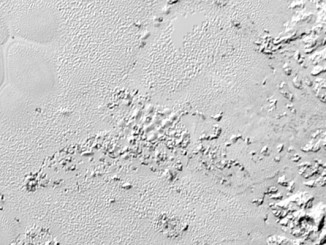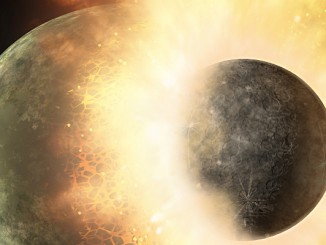
Did Pluto’s moon Charon possess an ancient subsurface ocean?
This image from NASA’s New Horizons spacecraft focuses on a section of the informally named Serenity Chasma, part of a vast equatorial belt of chasms on Pluto’s largest moon, Charon. Scientists believe that Charon’s subsurface water-ice layer may have been partially liquid in its early history, and has since refrozen, expanded and pushed the surface outward, producing the massive chasms we see today.









